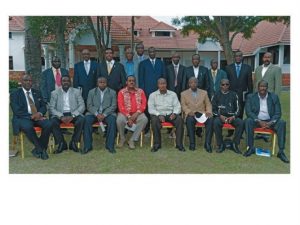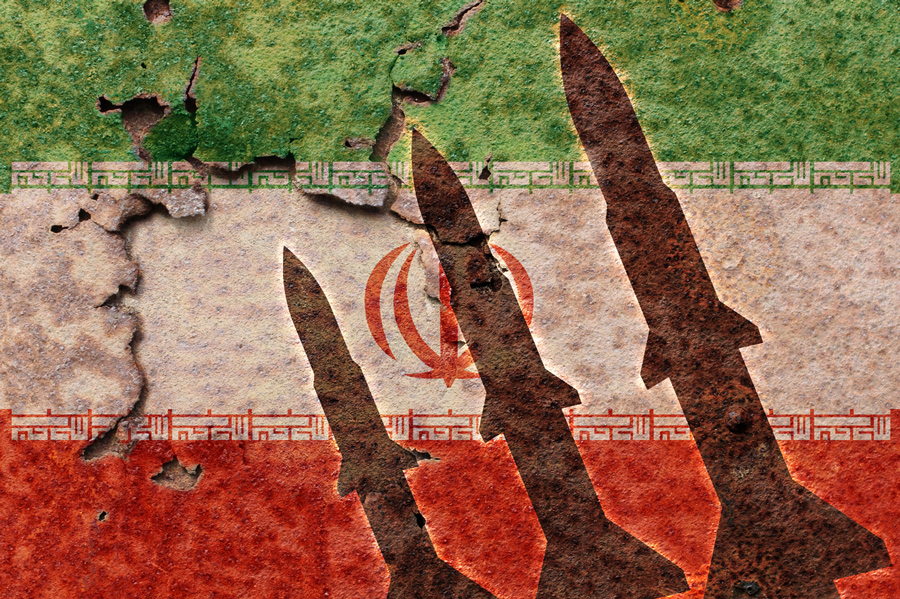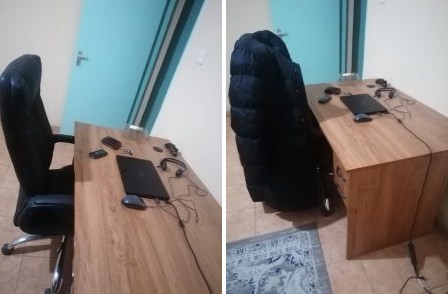WHO ARE BAHORORO?

Dear Ugandans,
I have received many requests to elaborate on what I have written about Bahororo. While many people have some ideas about Bahima and Batutsi, they are not sure who Bahororo are, how they are related to Bahima and Batutsi and how and when they entered Uganda. This brief will try to provide a clarification. But first let me summarize the relationship between Bahororo on the one hand and Bahima, Batutsi and Banyamulenge on the other hand.
1. It is now established that Bahororo, Bahima and Batutsi have a common Nilotic and Luo-speaking ancestry. The Nilotic Luo-speaking people entered Uganda from Bahr el Ghazel in southern Sudan with long horn cattle. It is not clear what caused them to move. However, conflict with Dinka people (whom they resemble) over grazing land and water has been mentioned as a contributing factor. They crossed the Nile in phases into the grasslands further south. In Bunyoro, Toro and Buganda the Nilotic cattle herders mixed extensively with Bantu speaking people and formed new communities based on mixed farming of cattle herding, crop cultivation and some manufacturing largely of iron products. They adopted Bantu language.
2. Those who entered Ankole (Nkore at that time) adopted the name of Bahima and Lunyankole (Bantu) language. They introduced long horn cattle. Bahima decided not to intermarry with Bantu speakers they found in the area who practiced cattle (short horn) herding, crop cultivation and manufacturing activities. Bantu speakers who were dubbed Bairu (slaves) by Bahima had a diversified economy and were relatively well off than the new comers.
http://dianerwigara.com/index.php/2019/01/11/769/
3. The Nilotic cattle herding groups that entered Rwanda and Burundi adopted the name of Batutsi and Kinyarwanda (Bantu) language. They also adopted Bahutu king’s title of Mwami, meaning that Bahutu had kings before the Nilotic herders arrived. Like Bahima in Ankole, Batutsi in Rwanda and Burundi refrained from intermarriage with Bantu speakers whom they dubbed Bahutu (slaves).
4. Batutsi who entered eastern Congo now Democratic Republic of Congo (DRC) adopted the name of Banyamulenge. Banyamulenge do not intermarry with local communities.
5. In mid-1600s, a group of Batutsi from Rwanda under the leadership of Bashambo clan founded Mpororo kingdom covering northern part of present-day Rwanda and mostly southwest Ankole. They adopted the name of Bahororo (people of Mpororo). Like Bahima, Batutsi and Banyamulenge, Bahororo do not intermarry with Bantu speakers dubbed Bairu. Thus, Bahororo are Nilotic Batutsi from Rwanda. That is why Batutsi and Bahororo are sometimes used interchangeably.
6. Thus, Bahima, Batutsi, Banyamulenge and Bahororo are cousins with the same ancestry of Nilotic Luo-speaking people and long horn cattle herders (or pastoralists). Because they do not marry outside their ethnic group, they have retained their distinct Nilotic identity.Wherever they live, they adopt local names and local languages. That is all. They know and help one another very well. An ‘attack’ on one Muhororo is regarded by Bahororo as an attack on all of them.
7. Mpororo kingdom (kingdom of Bahororo people) disintegrated due to internal quarrels within 100 years of its founding. Bahororo then scattered. Some returned to Rwanda, others took refuge in Rujumbura in 1800, some stayed in Ankole and the rest went to other parts of Uganda.
8. The part of Mpororo in Ankole was taken over by Bahinda ruling clan of Bahima. Thus, Bahororo in Ankole became commoners like Bairu (slaves). To avoid being referred to as commoners Bahororo adopted the name of Bahima in Ankole, in Rujumbura and elsewhere. That is why they were not known until recently.
9. Although they lost their territory and suspended using their Bahororo name, they tenaciously clung together. While Bahima, Bahororo, Batutsi and Banyamulenge intermarry, men do not marry outside of Nilotic ethnic group. When other Uganda men (mostly educated or wealthy) marry Bahororo, Bahima, Batutsi and Banyamulenge women they are ‘tutsified’ and become an integral part of Bahororo, Bahima and Batutsi in-laws, basically abandoning their ancestral relatives. Kesaasi confirmed this relationship in her recent article in Observer (Uganda) newspaper.
10. Bahororo in Ankole who had kept a low profile, resurfaced during negotiations leading up to independence. They demanded a separate district in southwest Ankole (roughly present-day Ntungamo district). They were not successful. Museveni who is a Muhororo was old enough to understand what was going on.
11. Museveni realized that Bahororo numerical inferiority will always work against them in a democratic system based on majority rule. Revolutionary violence and later democracy at gun point would be the answer.
12. While still in High School Museveni began to organize. While at Dar es Salaam University in Tanzania, he undertook military and revolutionary training. Realizing that Bahororo were very few he rallied the support of disgruntled people: Bahima who had lost their Ankole kingdom in 1967, Batutsi who had lost their kingdom in Rwanda in 1959, Baganda who had lost their kingdom in 1967, Catholics who had been defeated by Protestants in Uganda elections, and western capitalism that had been wounded as a result of nationalization of private business and introduction of socialism in Uganda.
13. Using the pretext of so-called 1980 rigged elections Museveni with help of western media and money launched a five-year devastating guerrilla war in the Luwero Triangle on Buganda soil. He captured power in 1986.
14. Museveni who is power hungry soon realized that Marxist ideology would not keep him in power. He abandoned it, embraced capitalism, denationalized foreign enterprises and returned Asians in exchange for western political, diplomatic and financial support. Linda Chalker, former minister in Thatcher government became Museveni’s close adviser. Later the New Labor government in UK gave Museveni a breathing space and exempted him from introducing multiparty politics. “The new British Labor government has decided that it ‘will not press for multiparty reform in Uganda’” (Journal of Democracy April 1998). This breathing space gave Museveni an opportunity to destroy pre- independence parties: Catholic-based Democratic Party (DP) and Protestant-based Uganda Peoples’ Congress (UPC) and build National Resistance Movement (NRM) that absorbed DP and subsequently UPC supporters. When multiparty politics was reintroduced, DP and UPC were almost dead and have not recovered. FDC which started off very well is being strangled. In real terms, Uganda is one party state, Museveni’s NRM.
15. Using structural adjustment instruments, Museveni managed to marginalize or get rid of experienced Ugandans who were branded UPC supporters and refused to return those experienced Ugandans in diaspora except a few that were close to him. This environment gave Museveni the opportunity to hire Bahororo, Bahima, Batutsi and Banyamulenge cousins in government, private sector and security forces. Unfortunately most of them are poorly educated and inexperienced in running a government or business. That explains in large part why Uganda’s economy, ecology and society are in deep trouble. In pursuit of economic growth, NRM government forgot about development and sustainability.
16. As Bahororo consolidated, they began to come out of the shadows and to declare they are Bahororo, not Bahima anymore. Using historian advisers, Museveni has managed to identify Bahororo wherever they live in Uganda, in Africa and beyond and has given them juicy jobs in government and in business. The ministries of foreign affairs and finance and security forces are packed with Bahororo. It is rumoured (subject to confirmation) that Bashambo women (ruling Bahororo clan) have formed an association of Bashambokazi Kumanyana (to know one another) so they can help one another and consolidate Bahororo hold onto power.
17. Because many Bahororo and Bahima lack good education and experience as noted above, they have relied heavily on foreign (and largely young) advisers (with little knowledge of Uganda’s sensitive history and culture) while there are many Ugandans with good qualifications and a wealth of experience un or under-employed. Bahororo have monopolized strategic institutions and businesses in order to stay in power indefinitely.
18.To sum up, Bahororo are mostly concentrated in former Ankole district and Rujumbura county of Rukungiri district. They are Nilotic people who speak Bantu language. Their Nilotic cousins are Bahima, Batutsi and Banyamulenge. These cousins do not marry outside their Nilotic ethnic group. Bahororo are now the rulers of Uganda led by President Museveni who has been in power for 25 years and is now campaigning for another five-year term.
Eric Kashambuzi



















































